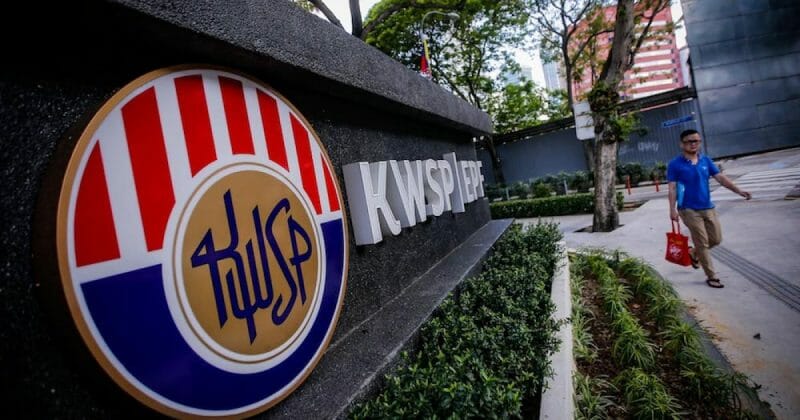
Published in Business Today, Asia News Today & Astro Awani, image by Business Today.
In an EMIR Research article, “Budget 2022 – towards a more comprehensive welfare system” (November 3, 2021), we had called for there to be put in place “a comprehensive and systematic welfare system that caters and meets the needs of all segments of society”.
Social protection and social security could be the pillar(s), among others, upon which our Welfare State can be constructed and developed.
A Welfare State is fully compatible and consistent with the concept of Keluarga Malaysia – which stresses inclusivity as one of the three features and is measured by the Key Happiness Outcome (KHO).
Indeed, Prime Minister Ismail Sabri Yaakob’s sub-theme of inclusivity extends beyond forging and fostering a sense of togetherness and belonging as well as emphasising a common destiny. It also entails promoting the principle of justice as the means by which Keluarga Malaysia is further strengthened. And by extension, inclusivity also presupposes and implies the bridging of existing economic/socio-economic gaps.
A Welfare State can be instrumental in achieving this aspect or dimension of the Keluarga Malaysia philosophy.
At the same time, a Welfare State adapted and suited to the Malaysian context can be the concrete expression of the reconceptualisation of the affirmative action agenda as first outlined in an EMIR Research article, “Rethinking and reconceptualising the affirmative action agenda in Malaysia” (October 8, 2021).
Back then, we had urged that the Equitable Shared Prosperity (ESP) Vision should be unrelenting and unabashed in its focus and prioritisation of an affirmative action agenda that eliminates ethnic identification with affirmative action – thus turning the New Economic Policy (NEP) on its head.
A Welfare State would, in the same vein, function as that tangible and conspicuous demonstration that even in the elimination of ethnic identification with affirmative action, the vast majority of a needs-based agenda would still be the Bumiputeras.
At the heart of the social protection/social security pillar of the Welfare State would be the basic state pension (BSP)/universal state pension (USP) – which serves to complement the Employees Provident Fund (EPF).
In another EMIR Research article, “Mix and match – Mix and match” – moving beyond the EPF” (October 29, 2021), we explained that this BSP/USP would be a form of a broad-based but inter-temporal consumption (i.e., for retirement) tax (albeit deferred for the future) to be paid into a separate account administered by a government agency or an appointed collector on behalf of the State but similar to the EPF in mandate.
A BSP/USP is critical for reliance on the EPF alone will not suffice for the vast majority of contributors. Recently, the EPF has estimated that only three per cent can afford to retire (“Only 3 percent of Malaysians can afford retirement: EPF”, The Malaysian Reserve).
According to EPF Chief Strategy Officer Nurhisham Hussein, 54 per cent of EPF members aged 54 would have less than RM50,000 in their savings account by year end. Furthermore, the majority of those who withdrew their entire funds upon reaching 55 would use it up within two to three years.
The BSP/USP would be partly funded by general taxation and partly by special tax contributions.
It mirrors that of the National Insurance scheme of the UK. So, all the B40 and lower M40 will be required to contribute a certain amount each month (minus employer contributions) on a progressive scale according to the tax schedule.
In due time, the BSP would be inter-generational. That is, the present generation of tax contributors would be funding for the retirement of the future generation.
The special tax contribution – for the BSP and paid to a specific government agency set up for the purpose – will become proof of contribution to the “Welfare State”.
The other option would be for there to be a minimum sum remaining in the EPF (before final withdrawal of one lump sum can be made). That is, instead of one lump sum as the final withdrawal upon retirement age, the payment will be staggered, instead, in the form of a monthly sum (like a pension).
Currently, the EPF only provide guidance to contributors in the form of its basic savings quantum. The quantum was last revised in 2019 and stands at RM240,000 as the amount that’s considered sufficient to support a member’s basic retirement needs for 20 years, from age 55 to 75, aligned with the Malaysian life expectancy.
At the same time, members who wish to participate in the EPF Members Investment Scheme (EPF-MIS) will now be required to have higher amount in their accounts.
As such, there’s no equivalent to the Singapore Central Provident Fund (CPF)’s retirement sum.
This proposed EPF minimum sum should be complemented by an annuity scheme (made compulsory) which can also be run by the EPF, for example. The annuity scheme will take place concurrently with the EPF contributions. Upon retirement age, the annuity scheme will also pay out a monthly sum.
Otherwise, the outstanding sum in the EPF upon retirement age can be transferred to an annuity scheme account (which can also be run by EPF, for example) and be used to pay out a monthly sum.
As part of what’s in effect a kind of progressive taxation system/model, calls for a tiered-dividend structure should be implemented.
This can take the following form, whereby:
- Returns will be two-tiered with only one threshold set at e.g., RM55,000; or
- Returns will be multi-tiered so that dividend of 9% is given for the first RM50,000 in savings, 7% for the subsequent RM50,001 to RM100,000 and 5% for the RM100,001 to RM200,000 after that (see “The State of The Nation: Tiered dividend necessary to help low-income EPF member”, The Edge, December 14, 2020).
The funds of those having low outstanding sum in the EPF should be specifically invested in high-yield government bonds that’s issued at coupon rates of up to 7% or more – as a “one-off” or which can even be extended/reinvested.
These Malaysian Government Securities (MGS) will be exclusive only for the EPF under a “tap” system. This simply means that the government would fix the yield and volume of issuance.
In view of this, among other reasons, it’s therefore, not desirable for the government to reduce its debt holdings just in order to “lower” the debt-to-GDP ratio and as part of the fiscal consolidation.
Of course, as a result of the neo-liberalism, governments have moved towards a bid-to-cover (BTC) system, i.e., auction process.
The BTC – for our MGS – stands at a healthy average of about 2.00++ times (whereas the BTC for our USD1.3 billion sukuk has stood at 6.4 times).
This simply means the RM volume of the bids received to the total RM volumes desired. So, if there’s RM150 billion worth of bond issuance and this is accompanied by RM300 billion of bids in the market, the BTC ratio would be 2.00 times.
It’s an indicator of how strong/robust the demand there is for our MGS (and Government Investment Issue).
Furthermore, the larger the bond issuance, the better it is for market liquidity.
In EMIR Research article, “Welfare and progressive economics on the back of macro-economic fundamentals” (November 2, 2021), we called for a targeted form of quantitative easing (QE) that’s (re)purposed and geared/oriented towards reducing or preventing debt rollover.
The secondary purchase (under QE) by Bank Negara could be increased to 30% (EMIR Research article, “Alternative avenues to fund deficit”, November 15, 2020) from the current 10%.
One specific method mentioned was the repo (repurchase) agreements between Bank Negara and the other stakeholders (banks, pensions funds, insurance companies, etc.) of the financial system.
Already under the pre-existing policy known as Institutional Securities Custodian Programme (Iscap), Bank Negara has been actively using repo operations “as part of its monetary policy instruments to manage liquidity in the banking system”.
So that the MGS (i.e., the older ones), instead of being tied to the original buyer (“lender”), can now be sold and repurchased under repo agreements with Bank Negara as the “intermediary” (“buyer” and “seller”).
This means that for the wider objective of enhancing liquidity and reducing/preventing debt rollover (under a targeted QE), reducing bond issuance just to lower the debt ceiling isn’t advisable.
The implications on fiscal and monetary policies and the concomitant impact on the financial situation of the private sector and households shouldn’t be underestimated.
In addition, EMIR Research calls for an agency to be set up either directly under the government or as government-linked company or as a social enterprise to provide post-retirement age employment to seniors – with no maximum age limit.
The Ministry of Entrepreneur Development and Cooperatives (Medac) should also in be in the forefront on developing schemes to nurture and help retirees to be entrepreneurs in their own right – together with SME Bank.
In the final analysis, at a time when the private sector and households are just beginning to rebuild their balance sheets, compelling them to run down their accumulation of savings – with premature fiscal consolidation and a rise in taxes across the board – isn’t feasible.
Jason Loh Seong Wei is Head of Social, Law & Human Rights at EMIR Research, an independent think tank focussed on strategic policy recommendations based on rigorous research.

